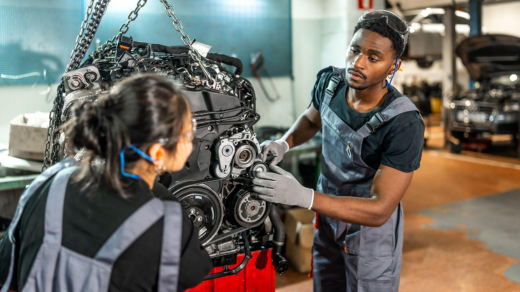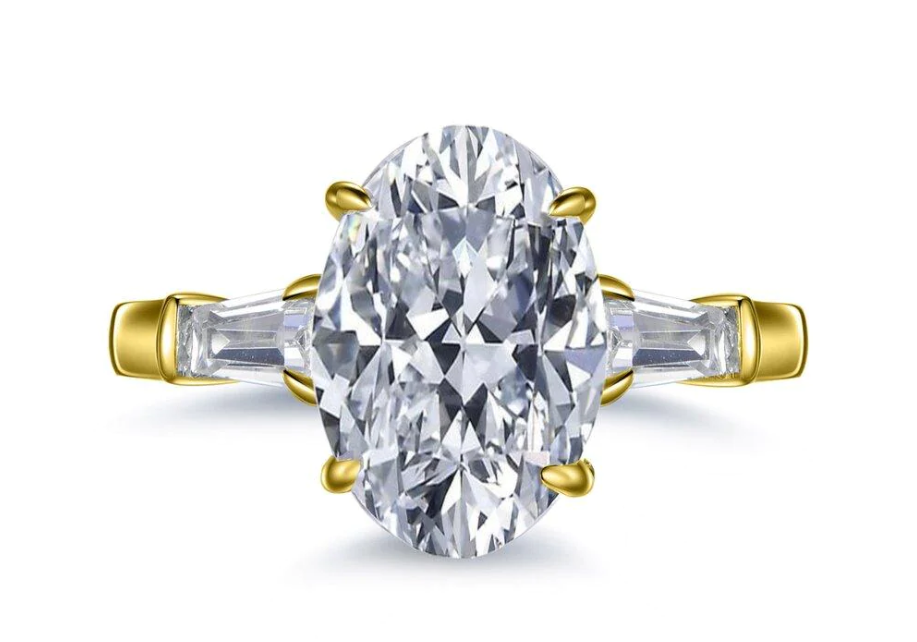Infiniti, Nissan’s luxury vehicle division, has built a distinctive identity in the premium automotive segment since its launch in 1989. Central to this identity has been the development of engines that deliver not just luxury-grade refinement, but also the performance character that distinguishes Infiniti from its competitors. Over three decades, Infiniti’s engine lineup has evolved through significant innovations that reflect the brand’s commitment to what they call “Inspired Performance.”
The VQ Revolution: Setting New Standards
The story of modern Infiniti engines begins with the legendary VQ series—a family of V6 engines that has received numerous accolades and repeatedly earned places on industry “Best Engines” lists. First introduced in the early 1990s, the VQ architecture represented a clean-sheet approach to V6 design, featuring aluminum construction, dual overhead camshafts, and a 60-degree cylinder bank angle for natural balance.
What made the VQ truly special was its combination of characteristics rarely found together in a production engine: substantial low-end torque, willingness to rev, exceptional smoothness, and remarkable reliability. This versatility allowed the VQ to power everything from luxury sedans to sports coupes and crossover SUVs while maintaining a consistent character of responsive, refined performance.
The 3.0-liter VQ30DE and later the 3.5-liter VQ35DE became signature powerplants for the brand, with the latter producing between 260 and 300 horsepower depending on the application—impressive figures for naturally aspirated V6 engines of their era. Their distinctive exhaust note, often described as somewhere between a growl and a howl, became part of Infiniti’s sonic identity.
VK-Series: V8 Refinement with Japanese Precision
For flagship luxury applications, Infiniti developed the VK-series V8 engines. These powerplants, particularly the 4.5-liter VK45DE and 5.0-liter VK50VE, delivered the effortless power expected in the premium segment while maintaining distinctively Infiniti characteristics.
Unlike some competitors who focused primarily on displacement, Infiniti’s V8 engines emphasized efficiency and response. The VK45DE featured titanium valves, microfinished camshafts, and a high compression ratio that enabled impressive power density for its era. Later, the VK50VE introduced Infiniti’s VVEL (Variable Valve Event and Lift) system, which provided precisely controlled valve operation throughout the rev range.
These V8 engines powered models like the Q45 sedan and FX crossover, giving them acceleration capabilities that often surprised drivers experiencing Japanese luxury vehicles for the first time. The engines’ smooth power delivery and refined character played a crucial role in establishing Infiniti’s credibility in the luxury performance segment.
The VR-Series: Twin-Turbo Innovation
As automotive engineering evolved toward forced induction, Infiniti embraced turbocharging with the VR-series engines. The most notable of these, the VR30DDTT, is a compact 3.0-liter twin-turbocharged V6 producing between 300 and 400 horsepower depending on the application. This engine represents a significant engineering achievement, utilizing small, quick-spooling turbochargers mounted directly to the exhaust manifolds for minimal lag.
The VR30DDTT incorporates numerous advanced technologies, including direct injection, an optical speed sensor for the turbochargers, and an electronic wastegate for precise boost control. Perhaps most impressive is how the engine maintains the smooth, linear power delivery traditionally associated with naturally aspirated engines despite its forced induction design.
In the Q50 Red Sport 400 and Q60 Red Sport 400 models, this engine delivers 400 horsepower and 350 lb-ft of torque—figures that rival many larger V8s while offering better fuel efficiency and lower weight. The VR-series engines demonstrate Infiniti’s ability to embrace new technologies without sacrificing the driving character that defines the brand.
Hybrid Excellence: Direct Response Hybrid System
Infiniti’s approach to hybridization reflects the same performance-focused philosophy found in their conventional engines. Rather than using hybrid technology solely for efficiency, Infiniti’s Direct Response Hybrid system aims to enhance performance while improving fuel economy.
The system pairs a V6 engine with a powerful electric motor that can provide instant torque for acceleration, creating what Infiniti calls a “driver’s hybrid.” In the Q50 Hybrid, this approach yielded a combined 360 horsepower while achieving significantly better fuel economy than the standard V6 model.
What distinguishes Infiniti’s hybrid approach is how seamlessly it integrates electric assistance with conventional power. The system’s sophisticated control logic prioritizes a natural driving feel, avoiding the artificial character sometimes associated with hybrid powertrains.
JDM Infiniti Engines: The Japanese Market Advantage
For enthusiasts and vehicle owners seeking replacement powerplants, used JDM Infiniti engines offer several distinct advantages. Japanese Domestic Market engines often have lower mileage due to Japan’s strict vehicle inspection system and typically shorter ownership cycles. Additionally, JDM engines sometimes feature different tuning or components compared to their export counterparts.
These engines typically come from vehicles that have been meticulously maintained according to manufacturer specifications—a reflection of Japanese car culture’s emphasis on proper maintenance. For restoration projects or performance builds, JDM engines can provide a like-new starting point with proven Infiniti reliability.
Engineering Philosophy: The Details Matter
What separates Infiniti engines from many competitors is an obsessive attention to detail. Examples include:
Microfinished Components: Critical engine components like crankshafts and camshafts undergo additional processing to achieve exceptionally smooth surfaces, reducing friction and improving efficiency.
Balanced Rotating Assemblies: Infiniti engines feature precisely balanced crankshafts, connecting rods, and pistons to minimize vibration and enhance smoothness throughout the rev range.
Acoustically Engineered Intake Systems: Intake runners are designed not just for optimal airflow but also to produce pleasing engine sounds, enhancing the sensory experience of driving.
Rigid Block Construction: Engine blocks feature additional reinforcement in high-stress areas, contributing to both durability and reduced noise by minimizing deflection under load.
These engineering details may not appear in marketing materials, but they collectively create the refined character that Infiniti engines are known for.
Performance Tuning Potential
Many Infiniti engines have developed strong followings in the performance aftermarket due to their robust construction and tuning potential. The VQ35DE, in particular, has proven capable of significant power increases with appropriate modifications, while maintaining reliability that owners expect from Japanese engineering.
Platforms like the G35 and G37 have become popular choices for enthusiasts seeking a balance of luxury and performance, with their VQ engines accepting forced induction, internal strengthening, and management system tuning to achieve remarkable power levels.
Even Infiniti’s newer twin-turbocharged engines have shown substantial headroom beyond their factory ratings, with tuners achieving significant gains through relatively straightforward modifications to boost pressure and fuel delivery.
The Future: Variable Compression and Beyond
Infiniti continues to innovate with technologies like the world’s first production variable compression engine—the VC-Turbo. This revolutionary design can physically change its compression ratio between 8:1 and 14:1 depending on driving conditions, optimizing for either performance or efficiency as needed.
This technology exemplifies Infiniti’s approach to engine development: pursue innovations that directly enhance the driving experience rather than simply chasing specification-sheet numbers. The VC-Turbo delivers V6-like performance from a four-cylinder package while achieving improved fuel economy—precisely the kind of no-compromise solution that has defined Infiniti powertrains.
Conclusion
Infiniti engines represent a distinct approach to luxury performance—one that values refinement and response equally. From the naturally aspirated excellence of the VQ series to the innovative forced induction designs of today, these powerplants have played a crucial role in establishing Infiniti’s unique position in the premium automotive segment.
For drivers and enthusiasts alike, Infiniti engines offer a compelling combination of smooth operation, engaging character, and proven reliability that continues to distinguish the brand in an increasingly competitive luxury market. As automotive technology evolves toward electrification, Infiniti’s commitment to “Inspired Performance” suggests that whatever form future powertrains take, the driving experience will remain central to the brand’s engineering philosophy.
Infiniti Engine Innovation: The Pursuit of Performance Luxury
Infiniti, Nissan’s luxury vehicle division, has built a distinctive identity in the premium automotive segment since its launch in 1989. Central to this identity has been the development of engines that deliver not just luxury-grade refinement, but also the performance character that distinguishes Infiniti from its competitors. Over three decades, Infiniti’s engine lineup has evolved through significant innovations that reflect the brand’s commitment to what they call “Inspired Performance.”
The VQ Revolution: Setting New Standards
The story of modern Infiniti engines begins with the legendary VQ series—a family of V6 engines that has received numerous accolades and repeatedly earned places on industry “Best Engines” lists. First introduced in the early 1990s, the VQ architecture represented a clean-sheet approach to V6 design, featuring aluminum construction, dual overhead camshafts, and a 60-degree cylinder bank angle for natural balance.
What made the VQ truly special was its combination of characteristics rarely found together in a production engine: substantial low-end torque, willingness to rev, exceptional smoothness, and remarkable reliability. This versatility allowed the VQ to power everything from luxury sedans to sports coupes and crossover SUVs while maintaining a consistent character of responsive, refined performance.
The 3.0-liter VQ30DE and later the 3.5-liter VQ35DE became signature powerplants for the brand, with the latter producing between 260 and 300 horsepower depending on the application—impressive figures for naturally aspirated V6 engines of their era. Their distinctive exhaust note, often described as somewhere between a growl and a howl, became part of Infiniti’s sonic identity.
VK-Series: V8 Refinement with Japanese Precision
For flagship luxury applications, Infiniti developed the VK-series V8 engines. These powerplants, particularly the 4.5-liter VK45DE and 5.0-liter VK50VE, delivered the effortless power expected in the premium segment while maintaining distinctively Infiniti characteristics.
Unlike some competitors who focused primarily on displacement, Infiniti’s V8 engines emphasized efficiency and response. The VK45DE featured titanium valves, microfinished camshafts, and a high compression ratio that enabled impressive power density for its era. Later, the VK50VE introduced Infiniti’s VVEL (Variable Valve Event and Lift) system, which provided precisely controlled valve operation throughout the rev range.
These V8 engines powered models like the Q45 sedan and FX crossover, giving them acceleration capabilities that often surprised drivers experiencing Japanese luxury vehicles for the first time. The engines’ smooth power delivery and refined character played a crucial role in establishing Infiniti’s credibility in the luxury performance segment.
The VR-Series: Twin-Turbo Innovation
As automotive engineering evolved toward forced induction, Infiniti embraced turbocharging with the VR-series engines. The most notable of these, the VR30DDTT, is a compact 3.0-liter twin-turbocharged V6 producing between 300 and 400 horsepower depending on the application. This engine represents a significant engineering achievement, utilizing small, quick-spooling turbochargers mounted directly to the exhaust manifolds for minimal lag.
The VR30DDTT incorporates numerous advanced technologies, including direct injection, an optical speed sensor for the turbochargers, and an electronic wastegate for precise boost control. Perhaps most impressive is how the engine maintains the smooth, linear power delivery traditionally associated with naturally aspirated engines despite its forced induction design.
In the Q50 Red Sport 400 and Q60 Red Sport 400 models, this engine delivers 400 horsepower and 350 lb-ft of torque—figures that rival many larger V8s while offering better fuel efficiency and lower weight. The VR-series engines demonstrate Infiniti’s ability to embrace new technologies without sacrificing the driving character that defines the brand.
Hybrid Excellence: Direct Response Hybrid System
Infiniti’s approach to hybridization reflects the same performance-focused philosophy found in their conventional engines. Rather than using hybrid technology solely for efficiency, Infiniti’s Direct Response Hybrid system aims to enhance performance while improving fuel economy.
The system pairs a V6 engine with a powerful electric motor that can provide instant torque for acceleration, creating what Infiniti calls a “driver’s hybrid.” In the Q50 Hybrid, this approach yielded a combined 360 horsepower while achieving significantly better fuel economy than the standard V6 model.
What distinguishes Infiniti’s hybrid approach is how seamlessly it integrates electric assistance with conventional power. The system’s sophisticated control logic prioritizes a natural driving feel, avoiding the artificial character sometimes associated with hybrid powertrains.
JDM Infiniti Engines: The Japanese Market Advantage
For enthusiasts and vehicle owners seeking replacement powerplants, used JDM Infiniti engines offer several distinct advantages. Japanese Domestic Market engines often have lower mileage due to Japan’s strict vehicle inspection system and typically shorter ownership cycles. Additionally, JDM engines sometimes feature different tuning or components compared to their export counterparts.
These engines typically come from vehicles that have been meticulously maintained according to manufacturer specifications—a reflection of Japanese car culture’s emphasis on proper maintenance. For restoration projects or performance builds, JDM engines can provide a like-new starting point with proven Infiniti reliability.
Engineering Philosophy: The Details Matter
What separates Infiniti engines from many competitors is an obsessive attention to detail. Examples include:
Microfinished Components: Critical engine components like crankshafts and camshafts undergo additional processing to achieve exceptionally smooth surfaces, reducing friction and improving efficiency.
Balanced Rotating Assemblies: Infiniti engines feature precisely balanced crankshafts, connecting rods, and pistons to minimize vibration and enhance smoothness throughout the rev range.
Acoustically Engineered Intake Systems: Intake runners are designed not just for optimal airflow but also to produce pleasing engine sounds, enhancing the sensory experience of driving.
Rigid Block Construction: Engine blocks feature additional reinforcement in high-stress areas, contributing to both durability and reduced noise by minimizing deflection under load.
These engineering details may not appear in marketing materials, but they collectively create the refined character that Infiniti engines are known for.
Performance Tuning Potential
Many Infiniti engines have developed strong followings in the performance aftermarket due to their robust construction and tuning potential. The VQ35DE, in particular, has proven capable of significant power increases with appropriate modifications, while maintaining reliability that owners expect from Japanese engineering.
Platforms like the G35 and G37 have become popular choices for enthusiasts seeking a balance of luxury and performance, with their VQ engines accepting forced induction, internal strengthening, and management system tuning to achieve remarkable power levels.
Even Infiniti’s newer twin-turbocharged engines have shown substantial headroom beyond their factory ratings, with tuners achieving significant gains through relatively straightforward modifications to boost pressure and fuel delivery.
The Future: Variable Compression and Beyond
Infiniti continues to innovate with technologies like the world’s first production variable compression engine—the VC-Turbo. This revolutionary design can physically change its compression ratio between 8:1 and 14:1 depending on driving conditions, optimizing for either performance or efficiency as needed.
This technology exemplifies Infiniti’s approach to engine development: pursue innovations that directly enhance the driving experience rather than simply chasing specification-sheet numbers. The VC-Turbo delivers V6-like performance from a four-cylinder package while achieving improved fuel economy—precisely the kind of no-compromise solution that has defined Infiniti powertrains.
Conclusion
Infiniti engines represent a distinct approach to luxury performance—one that values refinement and response equally. From the naturally aspirated excellence of the VQ series to the innovative forced induction designs of today, these powerplants have played a crucial role in establishing Infiniti’s unique position in the premium automotive segment.
For drivers and enthusiasts alike, Infiniti engines offer a compelling combination of smooth operation, engaging character, and proven reliability that continues to distinguish the brand in an increasingly competitive luxury market. As automotive technology evolves toward electrification, Infiniti’s commitment to “Inspired Performance” suggests that whatever form future powertrains take, the driving experience will remain central to the brand’s engineering philosophy.





